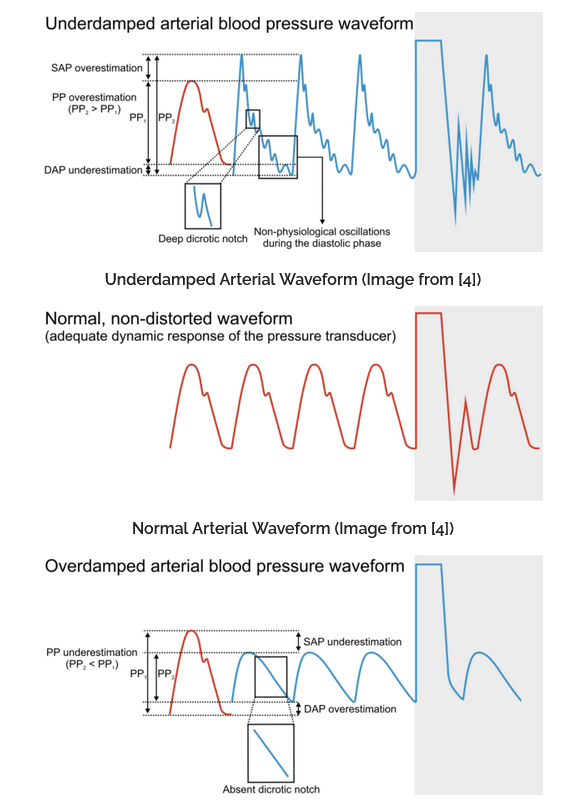arterial line damping
- related: ICU intensive care unit
- tags: #literature #cardiology #icu

Performing a rapid flush test is an important step to ensure the integrity of the arterial line system. In this clinical scenario, the arterial waveform with the rapid flush test is normal. There is a rapid rise in the pressure where the transducer is briefly exposed to pressure straight from the counter pressure bag, which is typically inflated at 300 mm Hg. When the rapid flush abruptly ends, the transducer system should oscillate no more than two or three times before returning to its natural frequency, and the arterial waveform must show a clear dicrotic notch (choice C is incorrect).1
- use square waveform test
- underdamping: > 2 oscillations
- overdamping: 0 to 1 oscillation
- underdamping
- overestimates systolic but underestimates diastolic
- wide pulse pressure
- MAP same
- narrow systolic peak, oscillations during diastolic
- can be caused by artifact or tachyarrythmia
- overdamping
